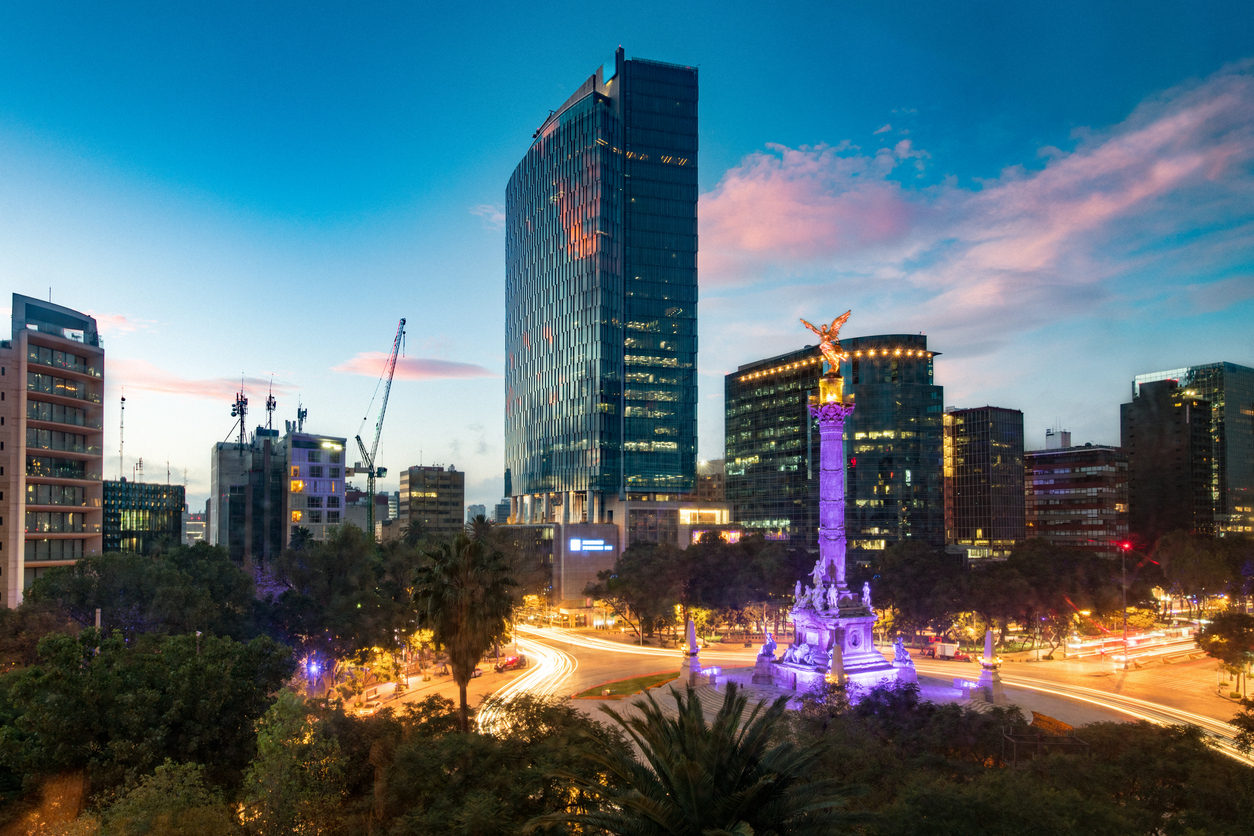
Employee Benefits, Global
Spotlight on Mexico – A guide to rolling out employee benefits technology
16-02-2024
Known for its fantastic cuisine, sombreros and sandy beaches, Mexico is the next stop on our global benefits tour. Mexico’s economy (which is the second largest in South America) is projected to grow between 2.5% and 3.5% in 2024 – buoyed by foreign investment in the region. Mexico has recently made policy reforms to encourage foreign investment, which is expected to grow by a further 10% this year.
The talent market in Mexico remains tight, especially in industries like digital transformation, e-commerce and logistics. And, with 61% of global employees saying that benefits are very important when choosing a new employer, benefits have an important role to play in attracting, retaining and engaging the best people. For international companies looking to add headcount in Mexico, or with employees moving between regions, a benefits platform can help deliver a consistent and intuitive benefits experience that meets high employee expectations.
Although the range of benefits we see in Mexico isn’t expansive, companies are increasingly using global benefits tech to manage core benefits such as health insurance, provide read-only content and information for statutory benefits – as well as to create a home for wellbeing, educational tools, and the employee experience.
An overview of the benefits landscape in Mexico
State provision
Mexican social security, called Instituto Mexicano del Seguro Social or IMSS, covers medical and social needs for all Mexican tax-paying employees. Employees receive a range of statutory benefits from social security contributions via IMSS, including a basic level of healthcare, pension plans, work risk insurance, and life insurance. Employers typically contribute 25-35% on top of their employees’ salaries to IMSS.
Retirement benefits are provided through a Retirement Fund Administrator (Administradora de Fondos para el Retiro – AFORE) which is chosen by the employee. However, employees with contributions prior to 1 July 1997 may choose to receive benefits from the Mexican Institute of Social Security (Instituto Mexicano del Seguro Social – IMSS).
Mandatory benefits
There are several core mandatory benefits employers in the region need to be aware of:
- Disability insurance. All employers must provide their employees with disability insurance; this is typically 75% of annual salary.
- Christmas bonus or aguinaldo. Employees receive a bonus at the end of the year, equivalent to a month’s pay (sometimes called a 13th month bonus). This must be paid in December but can be used as a flex fund to allow employees to select additional benefits, or be taken as cash by employees.
- Profit sharing (PTU). The Mexican Constitution dictates that all companies must share 10% of their annual profits equally among employees – distributed within 60 days of filing their annual tax return. However, PTU is capped at three months of an employee’s salary and prorated for employees who have been in the organisation less than a year. And some organisations – such as those that are newly formed or have been in business in Mexico for fewer than two years – are exempt.
Popular core benefits
Life insurance
Life insurance (also known as ‘death in service’) is also provided as part of the AFORE state provision. However, the majority of companies offer supplemental cover which is based either on years of service or a flat rate which is 3 times the employees’ annual salary.
Meal and food vouchers
Food vouchers (Vales de Despansa) are also very common and are sometimes mandated by local unions. These can be spent in a wide range of stores, including supermarkets. The amount given to employees is often salary based using the UMA calculation (see below for more information on UMA).
Pension
For the state pension, employer contributions range from 10.15% to 11.24% of total pensionable salary.
It’s also common for organisations to offer employees a supplementary pension fund, typically with defined contributions. Most of our customers offer a DC plan, and match contributions of up to 4% to 6% of salary. And around 80% of DC pension plans provide matching contributions based on a percentage of the employee’s contribution (typically up to a maximum of 4 – 6% of the employee’s salary).
Savings Funds
In addition to a Pension plan, Savings Funds are growing in popularity. This is a voluntary plan to encourage employees to save, and it has tax advantages. Contributions are often matched by the company, although this amount varies depending on the industry sector and position.
Medical insurance
Although all Mexican residents receive healthcare paid for by the IMSS, private medical is still a highly valued benefit by employees.
Many companies offer fully paid cover for their employees – especially if they’re looking to create a benefit offering that’s above the market median. This is an especially important benefit for expat workers who don’t receive any cover under the IMSS scheme. Employees have the opportunity to increase cover, as well as add dental and vision care at their own cost.
Other benefits
Some companies also offer a gym or sports club membership. And although wellbeing allowances are still quite rare, companies do sometimes offer a working from home allowance, to enable employees to purchase equipment and use towards the cost of utilities.
3 considerations for rolling out global benefits tech in Mexico
1. Benefits administration remains reliant on paper forms and wet signatures
Providers often require documentation to make changes to a policy or enrol new employees. For example, if an employee needs to add their child to a medical plan, they will need to supply their birth certificate. And providers often need to collect the employee’s RFC number (which is similar to the NI number in the UK). However, document upload can now be done via benefits platforms like OneHub, making it easier to administer benefits.
Benefits tech also makes it easier for employees to understand additional costs when adding a dependant to their scheme, showing them whether the plan is co-funded and how much they’ll need to contribute via salary sacrifice.
2. Benefits calculations are often based on the UMA
UMA stands for Unidad de Medida y Actualización which is the basis to calculate payments, tax and social security obligations. For 2023 this was $37,844.40 MXN (Approx £1,684), and is updated every February.
Contributions to pension plans and savings are usually based on UMA. For example, the maximum contribution level to pension payments is 15 x the UMA.
3. Catering to local nuances
Most companies prefer to provide benefits sites in Spanish as well as English to make it as easy as possible for employees to understand what’s on offer and make their selections. Benefits platforms like OneHub allow employees to easily toggle between Spanish and English based on their preference.
Planning to rollout your benefits programme in Mexico?
To learn more about how to prioritise your global rollout, take a look at our guide to rolling out employee benefits technology, ‘Getting it right the first time,’ or speak to one of our benefits experts.

Paul Andrews
Global Benefits Director, Benefex


